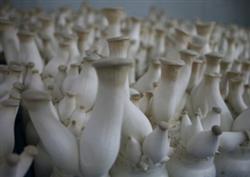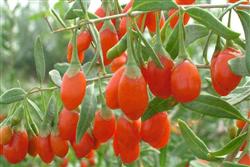Control of common diseases and insect pests of Pleurotus eryngii

The main pests that harm the fruiting bodies of edible and medicinal fungi are jumping worms, nematodes, mushroom maggots and so on. Jumping worms and nematodes mainly harm young mushroom buds, while mushroom maggots mainly harm mature mushroom bodies. These pests do great harm to the production of edible and medicinal fungi and must be carefully controlled. Jumping worms are also known as tobacco ash worms, springtails. The main hazards to the fruiting bodies of edible and medicinal fungi are mushroom wart jumpers and black horn jumpers. Mushroom wart jumper, nearly white, translucent, larva white, similar in shape to adults, molting after dormancy, gradually darkening, silver-gray, grayish black when clustered, like soot, adults like fleas, body length 1.2-1.5 mm, with short tentacles, no wings, 8 pairs of feet, often crawling rapidly on the surface of culture materials and fruiting bodies, with bounces at the tail, usually bouncing. The jumping height can be up to 10 centimeters high, there is grease on the body surface, and it is not afraid of water. When filling the border, it can float a layer of water, like bran, flowing with the water. In a suitable environment, the reproduction speed is fast, 6-7 generations can occur every year, and a large number of them occur at 20-28 ℃. It is often clustered in the fungal pores of the dorsal roots and leaves of the fruiting body. Especially in the young mushroom stage, the primordium will be covered by the insect body, so that the mushroom body will be yellowed, infected with bacterial rot and stop growing. Jumping insects are indicative pests whose planting environment is too humid and their sanitary conditions are extremely poor. The prevention and control methods are as follows: 1. The planting site must be sanitary and ventilated, and the places with good water conditions should avoid low-lying latrines and garbage dumps to reduce the chance of pollution. 2. Before the fruit body grows, 0.1% low-toxic phoxim can be sprayed in the surrounding environment 1-2 times for prevention. If the insect body is found, the same method can be used to control it. The main results are as follows: (1) there are many kinds of nematodes, such as blood nematodes, mushroom maggots, nematodes and so on. Blood nematode, 3-4 cm long, very slender, like a blood thread, clustered in the soil layer 1-2 cm deep around the mushroom bud, endangering the young mushroom bud and stopping the growth of the mushroom body from yellowing or decay. (2) Mushroom maggots are the main pests of mature mushrooms. If the body length is about an inch, it will drill into the inside of the mushroom body, resulting in a serious decline in the quality of the mushroom body and loss of commercial value. When maggots occur, cobwebs or worms can be found in the roots and leaves of the mushroom body. Prevention and control methods: 1, local spraying 0.3-0.5% trichlorfon water, surrounding spraying quick kill tincture. 2. Comprehensive prevention and control to clean the surrounding environment. Keep clean water. Timely treatment of diseases and insect pests to prevent spread.
- Prev

Skillful improvement of inoculation method of Pleurotus eryngii
In the cultivation season, Pleurotus eryngii belongs to medium-low temperature mushroom, the optimum temperature of mycelium is 23 ℃ 25 ℃, the optimum temperature for mushroom emergence is 12 ℃ and 18 ℃, the primordium does not appear below 8 ℃, and it is easy to deform when it is higher than 20 min. According to this characteristic, the cultivation season can be inoculated from September to October, and the mushrooms can be produced around November after being cultured for 50 days. Raw material preparation.
- Next

Production Technology of Lycium barbarum Tea
In order to improve the commercial value of Chinese wolfberry, in the picking and drying of Chinese wolfberry, we should pay attention to the following aspects: first, pay attention to the picking period of Chinese wolfberry when the fruit is bright red, smooth and bright, the fruit becomes soft, elastic, and the pulp thickens. The fruit can be picked when it is easy to separate from the stalk. The harvest of Chinese wolfberry is usually in the awn.
Related
- Fuxing push coffee new agricultural production and marketing class: lack of small-scale processing plants
- Jujube rice field leisure farm deep ploughing Yilan for five years to create a space for organic food and play
- Nongyu Farm-A trial of organic papaya for brave women with advanced technology
- Four points for attention in the prevention and control of diseases and insect pests of edible fungi
- How to add nutrient solution to Edible Fungi
- Is there any good way to control edible fungus mites?
- Open Inoculation Technology of Edible Fungi
- Is there any clever way to use fertilizer for edible fungus in winter?
- What agents are used to kill the pathogens of edible fungi in the mushroom shed?
- Rapid drying of Edible Fungi

